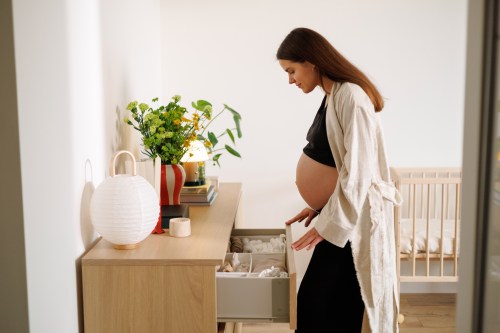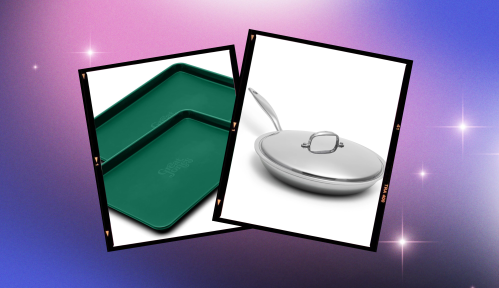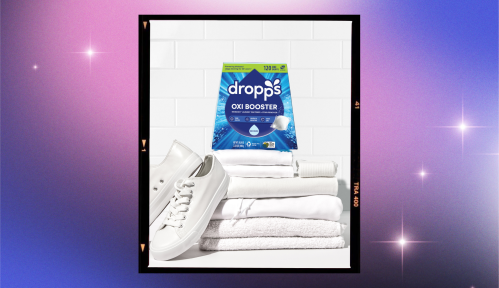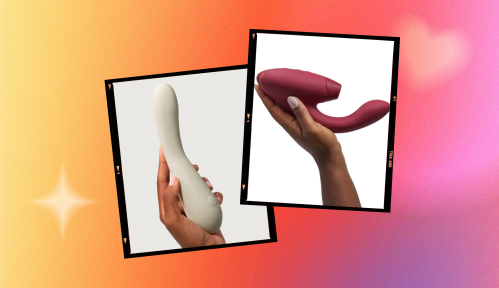Our editors independently select these products. Making a purchase through our links may earn Well+Good a commission
If, after reading the headline of this piece, you immediately thought “kegels!” and then started doing kegels, pause those contractions for a moment. The majority of women don’t know how to do a pelvic floor contraction properly, says board-certified doctor of physical therapy and women’s health specialist Allison Oswald, DPT, WCS. Doing pelvic floor contractions the right way is essential for a strong pelvic floor. Having a strong pelvic floor is important if you want to do things like “go to the bathroom when you want” and “support your pelvic organs.”
Well, now there’s an app for that. (Have we reached the point where that’s nostalgic and funny yet, or not quite?) The Elvie Trainer ($200) is a device that connects to an app on your smartphone and gives you live feedback during guided pelvic floor workouts—and it’s pretty much as close to seeing a pelvic floor trainer as you can get, Dr. Oswald says. “Having something [to lead you] versus just like, ‘Oh, I just need to lay on my mat and do these exercises,’ gives you some accountability,” she says. She has used the device herself and has guided patients through using it.
Elvie Pelvic Trainer
You might notice that shopping on this page is a little different than what you’re used to. Never fear; we’ll talk you through it. With the Well+Good SHOP, you can now add products to your cart right from this article page. Just click on a product below and more details will pop up in a new window. Hit “add to cart” and voila! That’s it! As you read more SHOP articles, you can keep adding products to your cart and check out when you’re ready (look for the cart icon on the right side of your screen).
Your pelvic floor takes care of four major functions: as previously mentioned, it’s important for bladder control and supporting your pelvic organs (such as your bladder, bowel, and reproductive organs), along with stabilizing your hips and back and sexual functions like the ability to orgasm.
“I think it’s important to understand what a strong pelvic floor is, because we always think of it as, you know, squeezing and tightening,” Dr. Oswald says. “When really, we define a strong, healthy pelvic floor as one that can fully relax and fully contract.” Kind of like when you do a push up—you don’t just collapse face-first on the floor and then push yourself up. (Or, if you do, please read this.) You control your movement on the way down and on the way up. Get that full range of motion, people.
Strengthening your pelvic floor starts with breathing properly. Dr. Oswald says that regardless of what position you are doing the exercises in, your diaphragm and your pelvis should be as aligned as possible. “When you breathe, as you inhale, your rib cage should expand 360 degrees, so you’re not breathing up into your chest, shoulders and ears, you’re not breathing just into your belly; you’re breathing around your bra line, essentially,” she explains.
Inhale through your nose and exhale out of your mouth. On the inhale, your diaphragm descends, as does your pelvic floor. On the exhale, your diaphragm comes up and the pelvic floor contracts. “You can use the Elvie to support you and give you feedback, which can be really helpful for the long term,” Dr. Oswald says.
That said, Dr. Oswald notes that there is a bit of a learning curve. To get the most out of the device, she recommends finding a thoughtful professional to guide you through how to use it, whether that’s a gynecologist, naturopathic doctor, or pelvic floor physical therapist. The next best thing would be guidance from a friend who has used it and can share some hot tips. She says to really make a difference, you probably need to use it four days a week—with the caveat that it’s really dependent on the individual’s body. It’s also safe to use every day.
Usually people go to pelvic floor therapy because they’re experiencing symptoms, which could be anything from peeing their pants to pelvic pain to prolapse, Dr. Oswald says. But she’s noticed in her LA practice there’s been an uptick of people coming in who want to work on their pelvic floor health preventatively, like to prepare for life changes such as pregnancy and perimenopause, or to improve their sex life. “It’s more about wellness [than issue management], which is really awesome,” she says.
Want to be the first to hear about the latest (and greatest) SHOP product drops, custom collections, discounts, and more? Sign up to have the intel delivered straight to your inbox.
Sign Up for Our Daily Newsletter
Get all the latest in wellness, trends, food, fitness, beauty, and more delivered right to your inbox.
Got it, you've been added to our email list.











